Caring for Carnivores
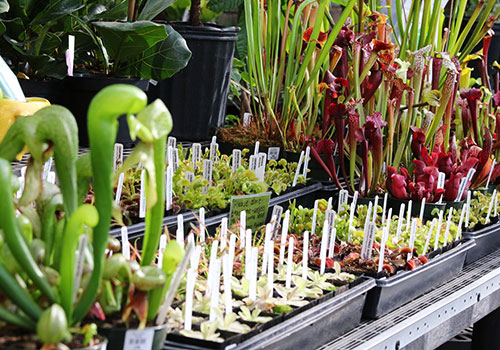 The outdoor gardening season may be winding down, but it’s always time for indoor gardening. If you’d like to create your very own little shop of horrors, then this post about carnivorous plants is for you!
The outdoor gardening season may be winding down, but it’s always time for indoor gardening. If you’d like to create your very own little shop of horrors, then this post about carnivorous plants is for you!
Flesh Eating Foliage
Yep, these plants really do eat meat! While most of the ones you’ll find in our indoor gardening department are used to a diet of fruit flies and perhaps the occasional spider, there are tropical pitcher plants that have been known to consume entire lizards and frogs.
But the curious gardener may well wonder why a plant would want to do that. After all, don’t plants make their own food?
Almost all plants do make their own sugar through photosynthesis, and the carnivorous ones are no exception. But a plant can’t live on sugar alone. Just like us, plants need lots of different nutrients as part of a balanced diet. For plants, nitrogen, phosphorus, and potassium are the most important nutrients other than carbon (sugar). They also need a whole host of micronutrients and minerals.
Most plants get these nutrients from the soil through their roots. But carnivorous plants come from boggy soil that has very little to offer a hungry plant. To take advantage of these environments where most plants would drown and starve, carnivorous plants have come up with some unique adaptations. While their roots do little more than hold the plant in place, their leaves are the botanical equivalents of mouths and stomachs. Instead of sucking nutrients up from the soil, they turn the typical food chain upside-down.
"While their roots do little more than hold the plant in place, their leaves are the botanical equivalents of mouths & stomachs."
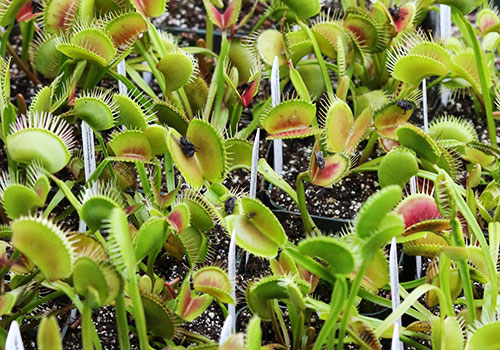 Placating Predators
Placating Predators
The care and keeping of carnivorous plants is a little different than keeping your average houseplant alive, but it doesn’t have to be difficult or complicated. In the wide and wonderful world of carnivorous plants, there are quite a few low-maintenance options that are great for beginning indoor gardeners or for anyone who prefers a laid-back approach. Just make sure you do a little research before you dive in.
Tropical vs. Temperate
Is your new carnivorous friend from a temperate or tropical region? That’s one of the most important things to know before you bring them home. While both temperate and tropical carnivores can make good houseplants, they have very different care needs. If you aren’t sure about this one, make sure to ask.
The easiest carnivorous plants to start with are those that are both tropical and adaptable. While temperate carnivores like venus flytraps need to be moved somewhere cool yet protected through the winter, tropical plants thrive at average indoor temperatures year-round.
You may have seen inspiring pictures of carnivorous plant terrariums, (they certainly can be beautiful to look at!) but not all predatory plants will appreciate that kind of constant warmth and humidity. Many tropical carnivores are suited to life in a terrarium, but temperate varieties really need the open air.
If you’re just getting started, you might consider resilient tropical sundews and highland tropical pitcher plants. Temperate options like the ever-popular venus flytrap are fine choices too, but make sure you’re prepared to give them the winter rest they need.
If you have questions about which carnivorous plants are right for you, the indoor gardening staff at Sky will be happy to help you choose.
"Not all predatory plants will appreciate constant warmth and humidity"
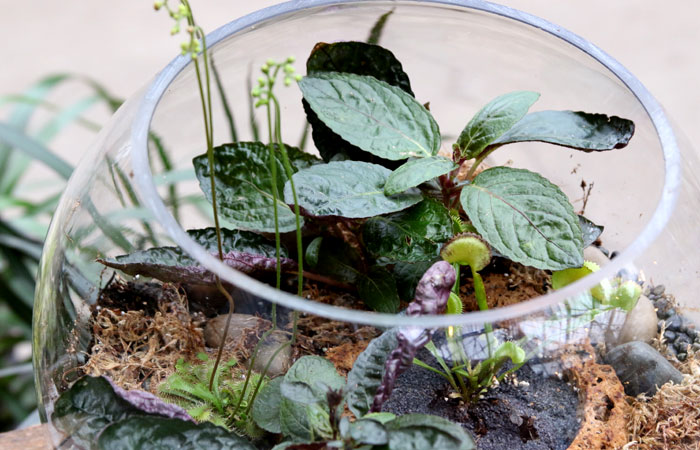
Create Your Own Bog
No matter what region they come from, carnivorous plants thrive under different conditions than the rainforest and desert plants that indoor gardeners might be familiar with. To help your carnivores thrive, you’ll need to make them feel at home by recreating the key features of their natural habitats.
- Bright light: Since tall trees and shrubs generally aren’t able to tolerate boggy conditions, carnivores are used to open skies. Place them near a sunny window, or give them a grow-light to make sure they’re getting what they need.
- Damp roots: In the wild, carnivorous plant roots rarely if ever dry out. Whereas many houseplants prefer a chance to dry out a bit between waterings, it’s better to keep carnivorous plant roots moist. Many carnivorous plants do best when they are grown in a tray of water that is always topped off, so that they can suck up as much water as they need. Tropical pitcher plants are one exception to this: while they still like to stay damp, they prefer some drainage, so this “tray method” doesn’t work well for them. Make sure to water the roots, not the leaves.
- Sphagnum and sand, not soil: Deep layers of sphagnum peat moss are what makes a bog a bog. And those floating masses of moss, potentially mixed with sand, are what carnivorous plant roots are used to. If you try to plant carnivorous plants in regular potting soil, they won’t be able to tolerate all the minerals and nutrients, and they will dry out too easily. Use a labeled carnivore mix, or make your own 50/50 mix of sphagnum peat moss and washed sand or perlite.
- Distilled or Rain Water: Once you’ve started with a growing medium free from minerals and nutrients, don’t go adding minerals when you water. Again, carnivore roots don’t know how to cope with that. You can use a little tap water in a pinch, but you’ll want to stick with distilled water as much as possible. Distilled water is just water that has evaporated and then condensed back into liquid, leaving any minerals behind. You can buy it by the gallon from grocery stores, collect nature’s distilled water as it falls from the sky, or easily make your own.
Don’t Overfeed Them
Feeding carnivorous plants can be fun, but don’t overdo it. Even indoors, they can usually catch all the prey they really need on their own. You can supplement their diets with the occasional housefly from your windowsill or freeze-dried cricket from the pet store if you want to, but don’t give them more than a few small bugs per month.
"Feeding carnivorous plants can be fun, but don’t overdo it."
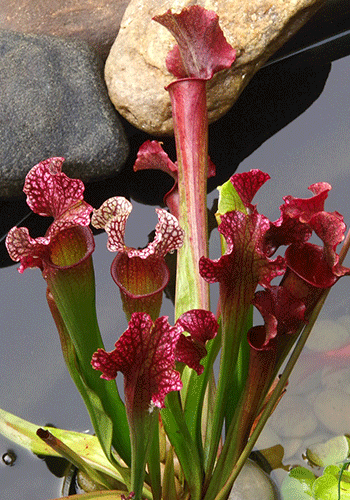
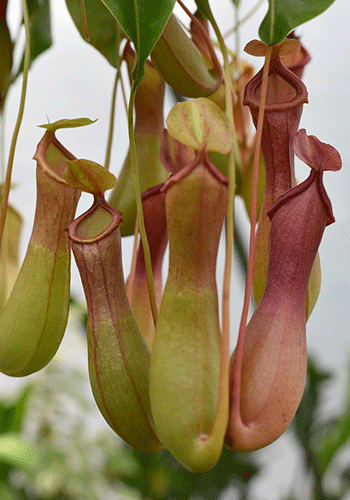
Collect a Carnivorous Coterie
Beware: Once you start exploring the vast and fascinating world of carnivorous plants, you may never find your way out! From the majestically toothed maws of venus flytraps to the elegant hanging pitchers of nepenthes or the delicate, orchid-like blooms of bladderworts, there are so many weird and wonderful predatory plants to discover.
